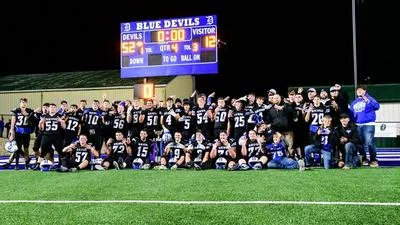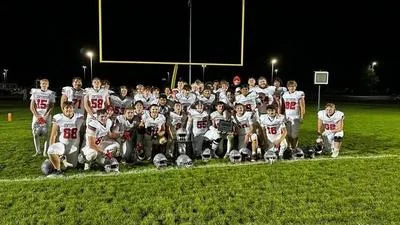Let’s talk cornhole and party sports.
Anything in which there is competition and you keep score can be considered a sport. Any physical activity in which skill is involved can be considered a sport. But are some things really activities and not true sports?
There are party sports, tailgate sports and backyard or park sports that seem to be recreation and pass-the-time activities, but they have grown such followings that many consider them real sports.
There are a ton of popular party games and tailgate competitions. Among them are softball, ping pong, volleyball, wiffleball, pickleball, kickball, touch football, frisbee tossing, ladder ball, wiffle ball golf, disc golf, kanjam (a frisbee toss game), croquet, bocce ball, lawn darts, and video game competition. There are bowling parties, mini golf get-togethers and batting cage assaults.
But one of the most popular games that emerged as a real sport, well, that is open for conjecture, but a fast-growing organized athletic competition is cornhole.
According to lawnstarter.com, Houston, San Diego and Phoenix are the top three U.S. cities for plying cornhole. Locally, Bakersfield was 34th of more than 200 cities in the study, and other nearby cities included San Jose ninth, Los Angeles at 14th, Sacramento at 15th, Santa Clarita 18th, Fresno 25th and Lancaster 59th.
Cornhole involves players taking turns throwing a bean bag at an angled board that has a hole in the top end. There are four bags to a set, and the bean bags will have different colors associated with the team. While rules can certainly vary depending on where the game is taking place, the American Cornhole League does have specific rules and regulations.
The goal is to toss the bag to where it slides up the inclined board and into a six-inch hole.
Early forms of the game can be traced back to the Blackhawk Tribe in Illinois where bags made from dried animal bladders were filled with corn kernels to be used for competition.
Others believe a German cabinet maker named Matthias Kaupermann invented a similar game in 1325 where grain-rolled bags were thrown into a box. He made the bags after he saw his children throwing stones into a hole that was dangerous for them to play in.
Another origin story begins in 1883 when Heyliger de Windt applied for a patent for “parlor quoits.” The game was found in the U.S. Patent records and may be the earliest known version of a board. It had a square hole instead of a circle.
Other areas that are more modern include the west side of Cincinnati in the 1960s and Kentucky, where a pioneer and farmer played “Baggo” with friends.
The game has a variety of names, including “Baggo,” “bag toss,” “tailgate toss" and “bean bag toss.” While the origin has several possibilities, it is now popular for people of all ages.
The American Cornhole Organization was founded in 2005 in Milford, Ohio, and in 2015, the American Cornhole League was created.
In Kern Valley, according to cornholefinder.com, the Delano Cornhole League has a Facebook page liked by over 300 people. The league meets Monday nights at Hyatt Place, and members play four rounds of cornhole with a random partner in a round-robin format.
Reckless Cornhole organizes players and tournaments in Kern County, with most from the Bakersfield area. The organization’s website page is liked by 486 and followed by 656 more.
Another group is the local chapter of the Dawg Pound League, which organizes and promotes leagues and tournaments. The group was founded in Fresno and has chapters across the U.S. The team’s Facebook group has 181 members. Bakersfield Cornhole is the South Valley chapter of the Dawg Pound League.
Still, another organization running tournaments is Project: Cornhole, also out of Bakersfield. The organization sells custom Cornhole sets, as well as other merchandise.
Simple Cornhole sets can be found at a variety of sporting goods and department stores and can run as low as $27.
So are you a cornholer? Do you play? If you do, do you consider it a sport? What is a sport to you? Let me know at mike@kvsun.com.







